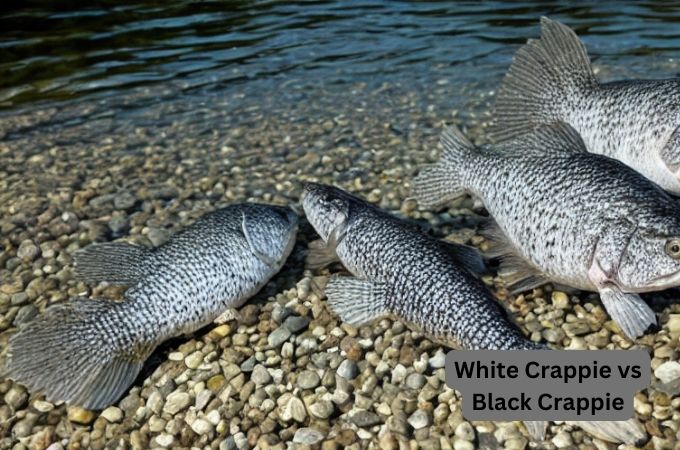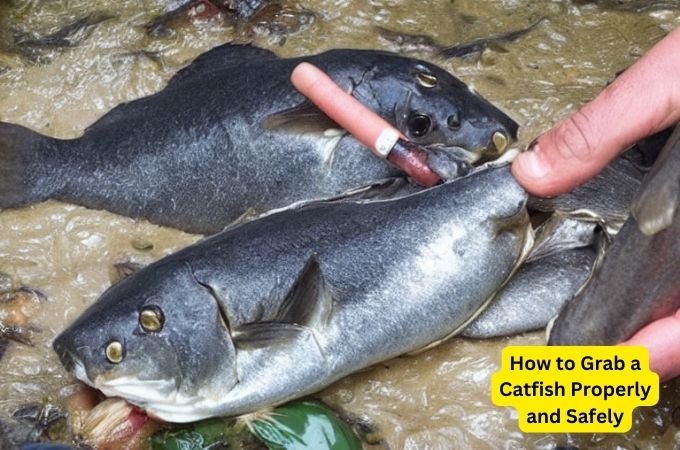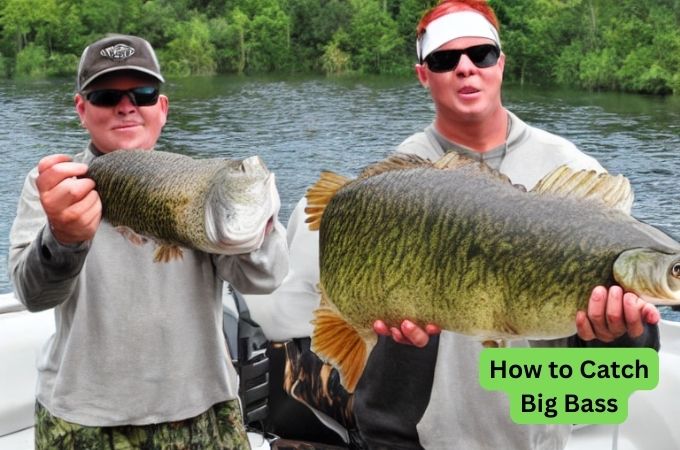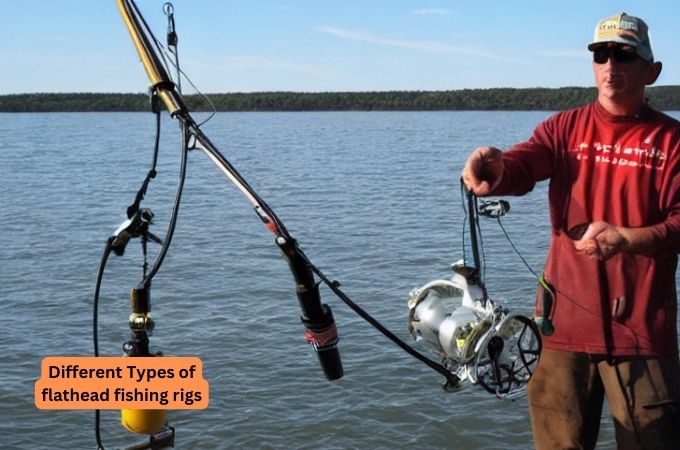White Crappie vs Black Crappie | Know The Distinguishing Characteristics
Today we will discuss White Crappie vs Black Crappie. Being one of the most common freshwater fish, the crappie can be found everywhere, they are also very delicious and quite fun to catch. With all the given reasons, it’s no surprise that this panfish is actually very popular.
However, despite this era being the modern age of technology and social media, where one can easily get access to a lot of information, it is still possible for confusion to arise. When it comes to crappies, there are tons of pictures and information about them throughout online public forums and online websites, social media web pages, and so on where anglers can exchange information and pictures.
However, despite such an extensive amount of information out there, confusion regarding the two colors of crappies seems to exist to this very day.
If you are one of them, who can’t quite pinpoint where the difference between the two kinds of crappies lies, then simply go ahead and read, as we give you some of the biggest pointers out there which will clear out any confusion that you might have had for so long.
It’s Time To Differentiate The Two Kinds Of Crappies:
White Crappie vs Black Crappie
While you might think that their color will be a giveaway, well, think again because it’s not so easy to know crappies by how they seem to appear. Let’s differentiate the two kinds of crappies by their color.
- Black and White Color Crappies- When talking about crappies, the two main kinds include the black and white varieties. While it may feel like it would be very easy to identify by their color, the common mistake that most of us tend to do is assuming that their names are related to their colors. However, it isn’t actually the case because their names aren’t related to their colors at all!
- Spawning Season is a Great Marker– it doesn’t take a lot of effort to be able to tell the two types of crappies apart. One marking that will tell the difference between the two is that the male crappies actually become extremely black during the spawning season, but later lose all their markings at other times of the year.
- Clear Water vs Muddy Water- surprisingly, another thing that affects the way crappies look is the water. The transparency of the water greatly affects how the crappies seem to look since the crappies in clear water tend to look more colorful than the ones in muddy water, which have no markings at all and seem to look white in color.
- Markings on The Bodies- one of the main differences between black crappie and white crappie is the markings on their body. While white crappies have markings, or more specifically, bars that run vertically down the whole length of their body, the black crappies will have speckled patterns on either side of their bodies and have no specific visible pattern. Because of the specks all over their bodies, they have also earned the nickname “specks”.
- Check Out The Fins!- despite the markings on the body or the specs, there might still be moments where you’ll find yourself very confused about the type of crappie. If you find yourself in a situation where you’re unsure about whether you’re looking at black crappie or a white one, simply look at the find.
- According to biologists, a surefire way to differentiate between the two types of crappies is to judge by the dorsal fins. The dorsal fin includes a series of webbed spines connected by a soft fan. This entire fin is found if you look closely at the fish across the top, and can actually be counted easily since they can be felt.
- Be a little careful when counting the fins though, since they feel a bit more like needles toward the tip. The most important piece of information here is that white crappies have 5-6 spines while black crappies have 7-8 spines.
- Differentiating By Shape- the two types of crappies often have different body shapes. This is another way of telling them apart. While the black crappie often has a smaller body shape, with a forehead that’s pushed forth, and a small angled mouth that slants upwards, making them look more round and flat.
- This entire appearance actually makes them look like they have snubbed noses, therefore, resulting in yet another nickname, “the snobby” or “stubbies”.
- On the other hand, white crappies have a more extended body with way bigger mouths, so they look comparatively longer than black crappies. The overall length is not actually very different, however, it still does help to differentiate between the two kinds of crappies.
- Measurement of The Entire Body- Yet another method which is used by biologists is to closely observe the measurements starting from the middle of the eye to the start of the dorsal fin.
- This measurement should be exactly like the dimension of the base of the dorsal fin on the black crappie. As for the white crappie, however, the same measurement isn’t alike as for the black crappies since the length from the center of their eyes to the front of the dorsal fin is way longer than the total dimension of the base of the dorsal fin on the white crappie.
- Marking The Mature Stage- in order to know whether the crappies are mature or not, there’s a marker to identify between the two kinds of crappies. The white crappie is known to reach maturity when they’re 10 inches, meanwhile, black crappies are considered to be mature at 8 inches of overall growth.
- The Diet and Habitat- a variety in the type of water in different parts of the country affect the type of diet and the overall environment of these black and white crappies.
- In general, black crappies feed on insects, worms, and crawfish, and prefer clean water, heavy vegetation, and more shade, compared to the white crappies, who prefer to remain in the open water. White crappies can also handle muddy and murky water better, and the diet of these white crappies includes more shad and minnows.
- Differences in Color- there are some differences in color among crappies that coincide with changes in the type of water and the seasons. During this time, there are slight differences that take place in the coloring and tint of the crappie spawns. While all these are natural occurrences, there are certain color changes that are due to genetic changes.
- Genetic Changes- also known as the black-nosed or black-striped crappie, they go through certain changes that happen in all black crappies due to a recessive gene change, which causes a black stripe to run from the dorsal fin all the way down to the lips.
- This gene brings about an evolutionary change that helps the crappie to see and also helps better when it tries to camouflage itself when looking for prey. If you consider white crappies, however, there are no such traits found in any of them.
- The Surrounding Environment- you must have heard from casual fishermen, and also experienced anglers that white crappies are found in abundance in places where there is enough shade and hiding place underneath the waters.
- White crappies tend to stay underneath rocks and tall and thick weeds which actually make a perfect hideout spot for white crappies. On the other hand, black crappies don’t quite want such shades or hiding places, but rather prefer clearer waters with sand, mud, and thick weeds underneath them.
- Saltwater vs Freshwater- both white crappies and black crappies can be found in waters that have an average level of salinity. Despite that, however, it was observed that white crappies were found more often in freshwater lakes or rivers whereas black crappies are most often found in saltwater lakes or rivers.
- Size of Mouth- this was another point that helps identify which are black crappies and which are white. You will even find expert anglers agreeing that white crappies tend to have a larger mouth compared to black crappies.
You might wonder how this was noticed, it all happened when anglers realized that they could actually catch more white crappies with a larger bait, whereas smaller baits were better at catching more black crappies.
All in all, it is quite possible to find both species together as they can survive side by side. Therefore, simply Overall, both species tend to thrive together, so you can expect to catch some white crappies as well as black crappies side by side.
Some More Facts About Crappies:
- It is possible for the white crappies to be completely white and the black crappies to be entirely black in color.
- White crappie can actually grow at a quite faster rate compared to black crappie. However, since the black crappie has more density than the white crappie, it also tends to weigh more.
- Although crappies generally roam around in larger schools, they can also be found in smaller schools as some anglers are more likely to suggest. Crappies tend to be more active during the night compared to the day, but in order to make sure that you catch a lot of fish, you need to make the correct fishing plan.
- It is actually possible to have hybrids from 2 different species of crappies that breed with each other. If that is the case, you could end up being confused as to what exactly you should be looking for, or what features differentiate the two kinds of crappies.
- Nonetheless, you already have a list of the many features that give you a clear indication of which ones are white crappies and which ones are black.
Confusion Regarding The Hybrid Crappies:
A few fisheries biologists from Missipi and Illinois have actually produced hybrid crappie for public consumption. While these hybrid crappies found in Kinkaid Lake seems to be bigger in size compared to both the white and black crappie, to everyone’s surprise, there is no evidence that a certain type of hybrid crappie can actually grow bigger or faster compared to normal crappie in the same environment.
By now, we know that black nose crappies are actually black crappie. This remains true unless we have reached the point where they have actually crossbred amongst themselves, which can make them natural hybrids, stock hybrids, or Magnolia crappies.
There’s only one way to find out whether they are hybrid crappies or not and that’s by genetic testing. However, getting accurate results through genetic testing is still farfetched since the test still can’t fully distinguish between stock and natural hybrid.
How To Identify The 3 Types of Hybrid Crappie:
Natural Hybrid Crappies:
These crappies might be found all over the country, but are not always available in most bodies of water. Since these hybrid crappies are a mixture of both species, you can actually pick them easily if you stay on the lookout for them.
Most of the time, a maximum number of hybrid crappies have the body structure of white crappies, and some of the vertical bars which often turn distorted or fade into random patterns full of specks near the tail. Another way to tell is by measurements. The crappies might have 7-8 spines while the dimensions will point towards white crappie.
Hybrid Stock Crappie:
For these crappies, a mixture of the male black-nosed black crappie and the female white crappie is used. In this case, it is a lot easier to sample the population since the black-nose trait is found in most offsprings.
The Magnolia Crappie:
Similar to the hybrid stock crappie, these crappies are a cross between the black-nosed black male and white female. This makes it easy to recognize the majority of fries since they come with a black stripe.

Final Words:
It may seem difficult to find the difference between the two types of crappies at first. However, now that you know everything that you should know when it comes to white and black crappies, hopefully, you will be able to find out the difference and catch the fish you are looking for.
Although some anglers don’t really care about any difference between the two, or even about any differences, you don’t want to lie in that confused zone at the end of the day.
Besides knowing the basic differences in physical features and habitats, you have also learned a few additional facts about crappies. Not only will this information help you know the differences, but you will also know a thing or two about when the best time to catch them is and how to know whether they are a hybrid of the two. Now that you know so much about crappies, it’s literally time to head out and test the waters with your newfound knowledge.





